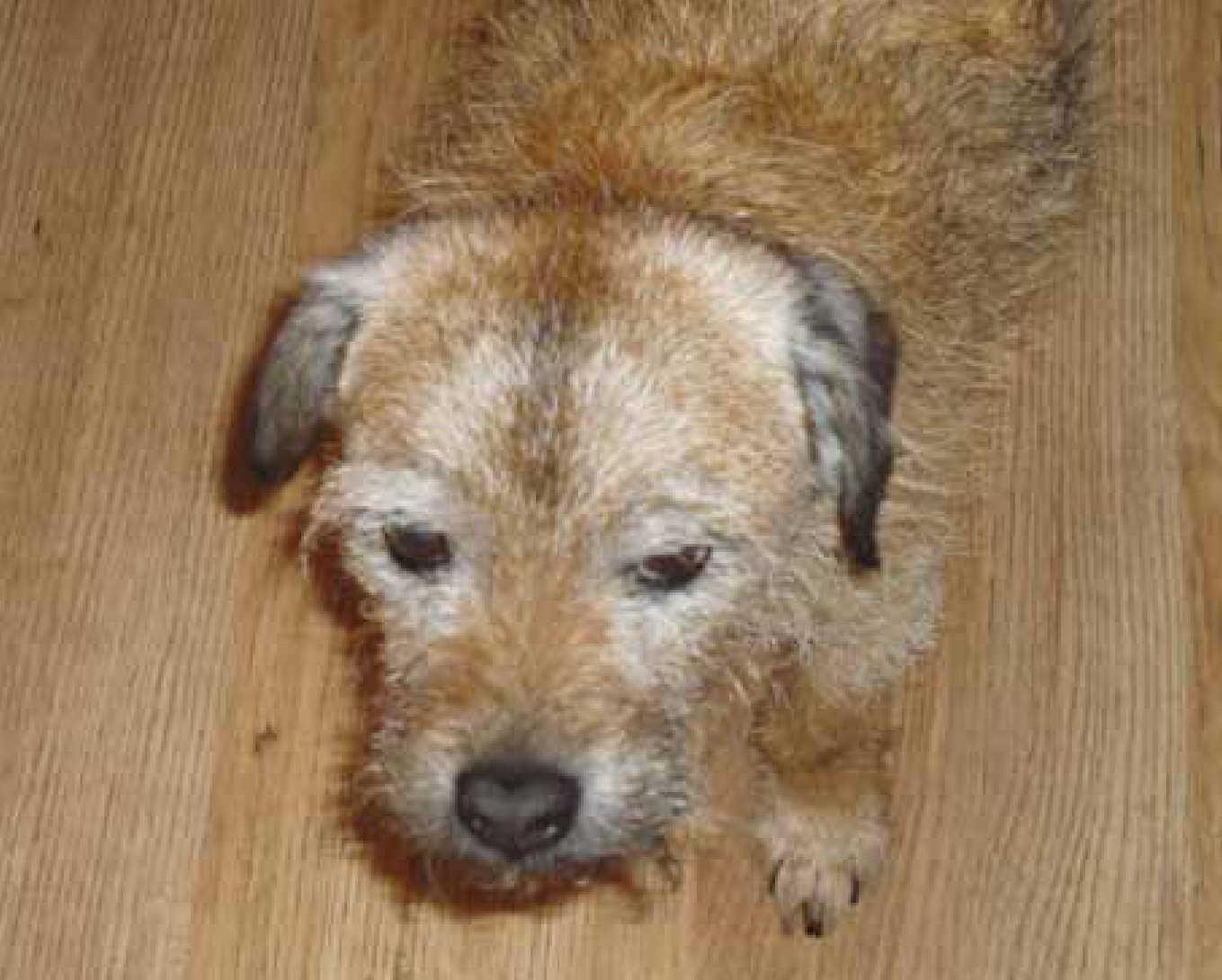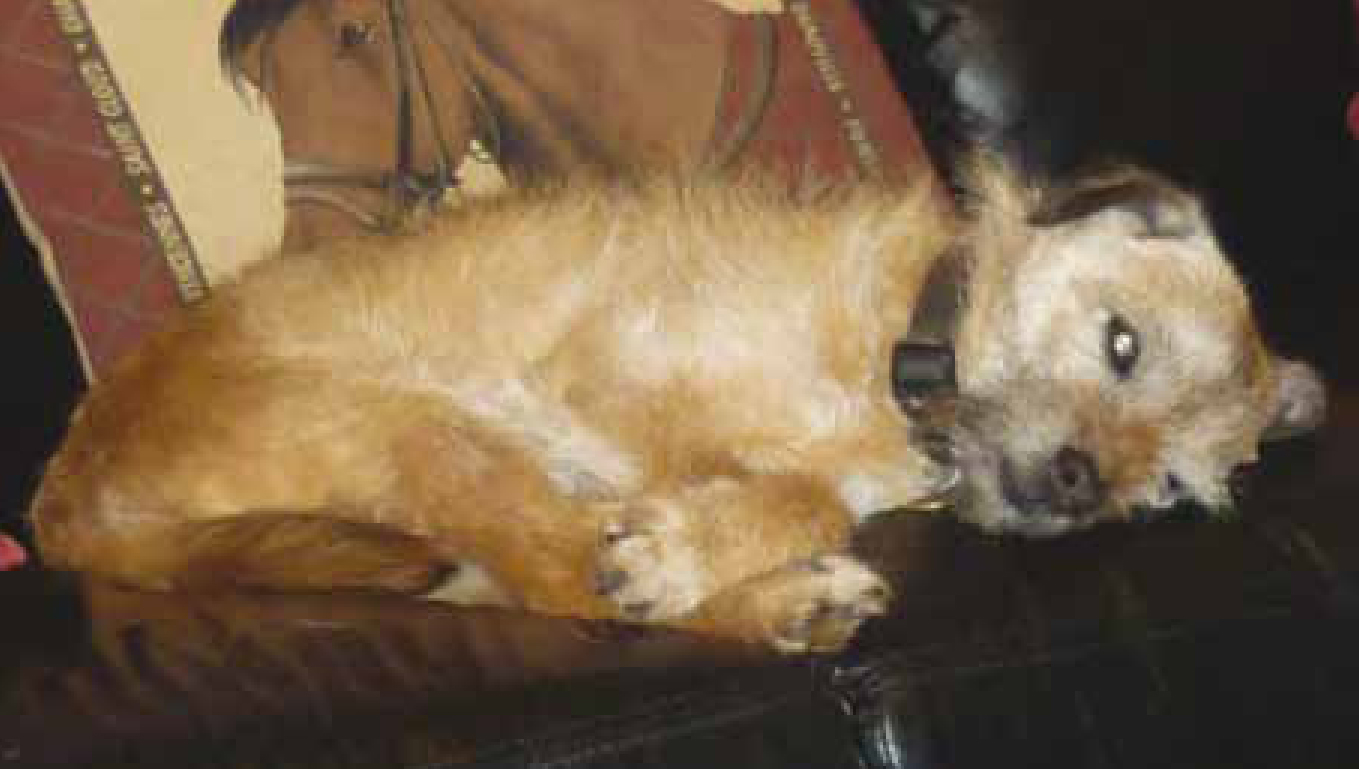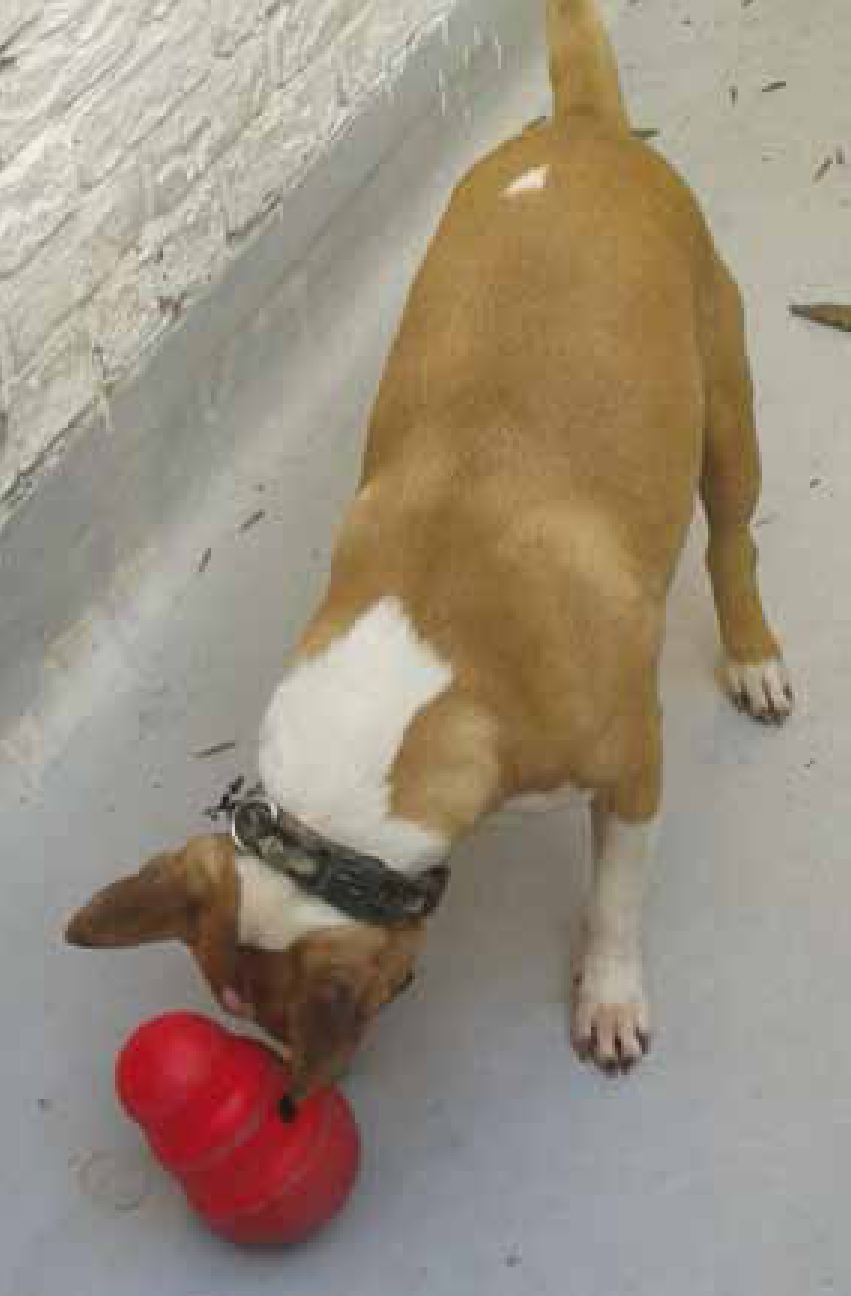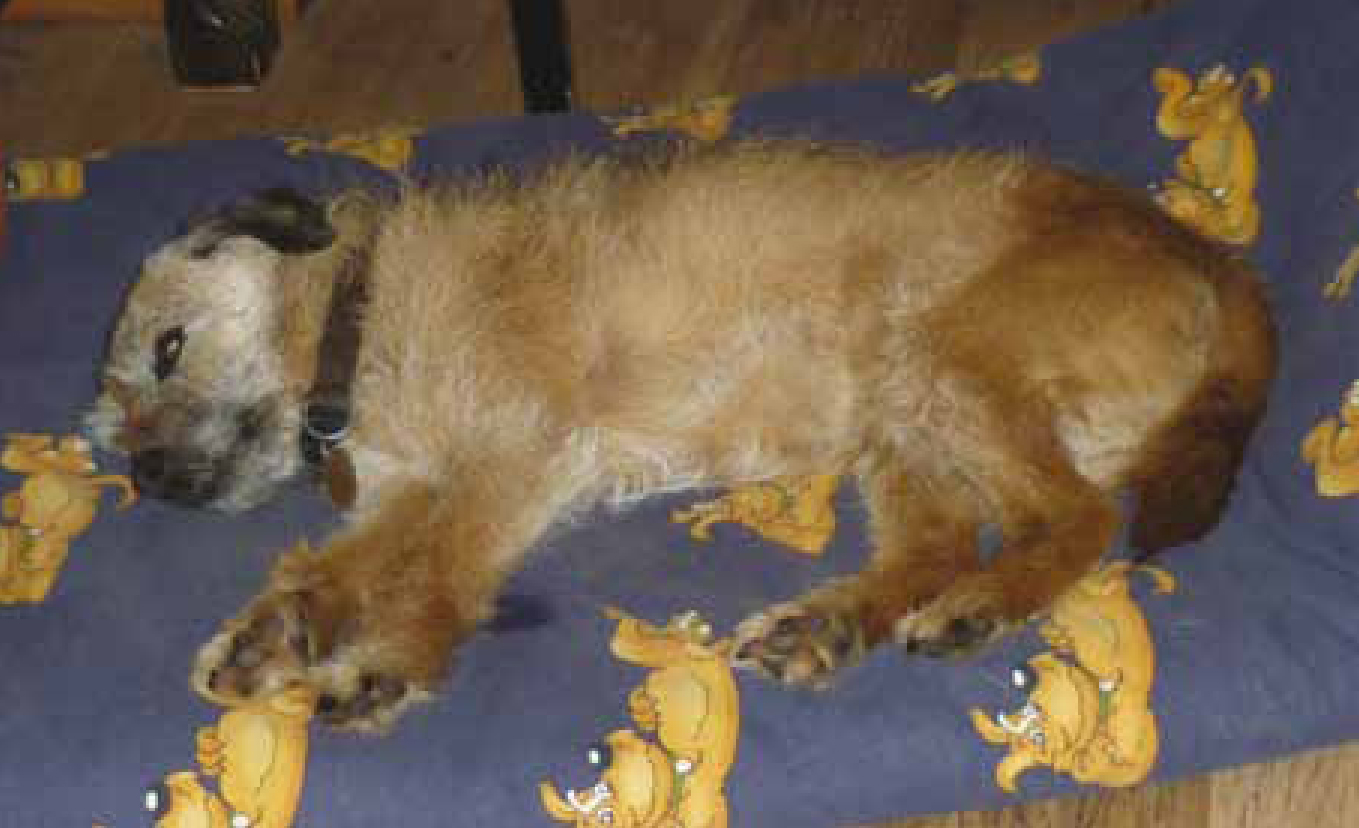Cognition can be broadly defined as mental processes such as perception, awareness, learning, memory, and decision making. Cognition enables an animal to take in information about the environment, process and retain it, and make decisions on how to act (Shettleworth, 2001).
The term cognitive dysfunction syndrome (CDS) was introduced to describe senior behavioural changes not solely attributable to a general medical condition (Ruehl and Hart, 1998), such as infection, organ failure or neoplasm. Such behavioural changes tend to fall into five categories, namely loss of cognition and recognition, loss of house training, disorientation, changes in the sleep-wake cycle and changes to activity levels (Frank, 2002). The acronym DISHA is most commonly used to summarise the classic symptoms of CDS.
DISHA
- D — Disorientation — the dog may:
- Appear lost in familiar environments
- Fail to recognise family members
- Appear less alert
- Become more irritable
- Stare blankly at the wall
- Get stuck in corners
- go to the wrong side of the door.
- I — Interacts less — the dog may:
- Show less interest in being petted or receiving attention
- Not actively seek attention
- Not greet family members
- Spend less time interacting with family members or other pets
- Ignore any disturbances.
- S — Sleep pattern disturbed — the dog may:
- Sleep more or less, often sleeping more during the day
- Wander around the house aimlessly at night
- Whine, vocalise, wander, pace or scratch continuously during the night.
- H — House training lost — the dog may:
- Not ask to go outside to eliminate
- Have frequent accidents at home. Urination tends to be more common than defecation
- Eliminate regardless of owner presence.
- A — Altered Activity level — the dog may
- Show intolerance to exercise
- Become destructive during owner absence (not previously exhibited).
It must however be noted that this acronym does not necessarily describe all of the signs that may be associated with CDS in dogs since an increase in anxiety, a decrease in hygiene, altered appetite and deficits in learning and memory have also been reported (Landsberg et al, 2003).
Implications for the human–animal bond
Owners of dogs displaying signs of CDS may find it increasingly difficult to cope with the changes in their pet's behaviour. This can place a strain on the human–animal bond which may be weakened or broken by a pet with behaviour problems such as night walking or loss of house training (Landsberg, 2005). Punishment or scolding will not ease night walking but will only further compound the dog's anxiety and confusion (Landsberg et al, 2011). Owners will need support and guidance from the veterinary team as, ultimately, they may need to make difficult decisions based on the treatment options available and the quality of life of their pet. Veterinary nurses have a pivotal role to play here as they are often the first port of call for concerned owners.
CDS and Alzheimer's disease
Certain authors have indicated that there may be similarities between CDS and Alzheimer's disease (Cummings et al, 1993; Cummings and Cotman, 1995; Ruehl et al, 1997). However aged dogs do not develop Alzheimer's disease as they lack neurofibrillary tangles, one of the classic markers of the neuropathy (Frank, 2002). Neurofibrillary tangles are insoluble twisted fibres found inside the brain's cells. These tangles consist primarily of a protein called tau, which forms part of a structure called a microtubule. Microtubules help transport nutrients and other important substances from one part of the nerve cell to another. In Alzheimer's disease, however, the tau protein is abnormal and the microtubule structures collapse (Brown et al, 2006)
There are however similarities between the two conditions such as the accumulation of beta-amyloid protein in the form of senile plaques in similar cortical areas of the brain. Beta-amyloid plaques are aggregations of insoluble fibrous proteins which predominantly accumulate within the cerebral cortex and hippocampus areas of the brain and cause interference in nerve conduction. Cognitive decline in aged dogs is strongly associated with the accumulation of beta-amyloid (Cummings et al, 1996) and the severity of cognitive decline correlates with the extent of amyloid deposition, therefore Curtis (2010) suggests it is best to commence treatment early in the course of the disease.
While the accumulation of beta-amyloid plaques is frequently reported as the cause of CDS, the exact cause remains unknown. What is certain however, based on the results of trial treatments and histopathological studies, is that multiple factors contribute to neuronal damage and loss (De Stefani-Llabres and Theobald, 2012). Such factors include, but are not limited to, oxidative damage, compromised cerebral blood flow, brain ventricular dilation, a change in the function or levels of neurotransmitters and a degeneration of white matter. Of these, oxidative damage on a cellular and nuclear level has been found to strongly correlate with CDS (De Stefani-Llabres and Theobald, 2012). Although oxygen is required for survival, a small amount of oxygen that is used by the mitochondria for normal, aerobic energy production is converted to reactive oxygen species which are known as free radicals (Landsberg and Head, 2004). Free radicals are responsible for a condition known as oxidative stress, by which cells, including those within the brain, are damaged. Free radicals may react with DNA, lipids and proteins, leading to cellular damage, dysfunction, mutation, neoplasia and cell death. Within the cell, this balance of detoxification and production is controlled, and if tipped in favour of overproduction, a state of oxidative stress is produced (Landsberg and Head, 2004).
The body produces endogenous defence mechanisms against oxidative damage known as antioxidants. However, fewer antioxidants are produced in the ageing body, enabling free radicals to damage cells, with the brain being especially susceptible. This is because the brain has a high lipid content, a high demand for oxygen, and limited ability for antioxidant defence and repair relative to other tissues (Landsberg and Head, 2004).
The influence of sexual status on CDS has long been studied in human beings, where a greater risk of developing Alzheimer's disease has been described in females (Mangone, 2002). This influence has only relatively recently been studied in dogs with Azkona et al's (2009) study revealing risk factors associated with sex and age-related cognitive impairments. According to their study, female dogs were a major risk group within the senior dog population to develop age-related behavioural problems. It has also been suggested, although further research is necessary to confirm or negate such claims, that neutered dogs are at greater risk of developing age-related behavioural problems compared with entire dogs. This is thought to be influenced by sex hormones, with testosterone considered to have a neuro-protective role.
Diagnosis of CDS
Neuropsychological testing methods to evaluate various aspects of learning and memory in animals have been developed, but are only available in a laboratory setting. Therefore, amongst the general pet population, assessment of change in an animal's cognition must rely on owner questioning to identify a deviation from what was previously considered normal (De Stefani-Llabres and Theobald, 2012). Physical symptoms of ageing such as greying of hair around the face and muzzle are easily recognised as a sign of ageing (Figure 1), however cognitive changes are often more subtle. The symptoms of brain ageing may be difficult to diagnose during a routine consultation; these signs can be very subtle but progressive, and signs such as sleeping more and being less responsive are often ignored or accepted by owners as part of the natural ageing process.

In a survey of owners of aged dogs (dogs that were 9 years of age or older) undertaken by Landsberg and Araujo (2005), 75% of dogs had at least one behavioural symptom indicative of CDS, yet only 12% of owners had reported the change to their veterinary surgeon. This is in keeping with the attitude reported by Osella et al (2007) that many owners were disinclined to believe that their dogs were showing any behavioural changes indicative of senility.
A list of 27 behaviours that are considered significant in the differentiation of elderly dogs with CDS and those with normal ageing has been identified (Salvin et al, 2011) and further refinement of these data enabled the development of a canine cognitive dysfunction rating scale (CCDR), whereby the severity of the change or abnormality observed was used to provide a total score. A score of 50 or above is considered to differentiate between normal ageing behaviours and CDS, with an overall diagnostic accuracy of 99.8% (De Stefani-Llabres and Theobald, 2012). An online calculator of the CCDR is available to view at www.maturedogs.com
De Stefani-Llabres and Theobald (2012) suggested that specific questioning of owners regarding behavioural changes should be undertaken as part of a routine examination of all elderly pets, not just those suspected of having CDS.
In conjunction with CCDR scale, an ageing dog presenting with non-specific signs compatible with cognitive impairment requires a complete physical examination, neurological examination, complete blood cell count, biochemistry profile and urinalysis (Frank, 2002). Fenner (1988) reported that clinical signs that can be associated with cerebral neoplasms include non-specific behaviour or mentation changes, aggressive behaviour, abnormal sleep patterns, changes in eating habits, changes in house training and wandering. Bagley et al (1999) reported that seizures occur in only 45% of dogs with brain tumours, stating that absence of seizures does not exclude the possibility of cerebral neoplasms. Imaging studies such as computed tomography (CT) or magnetic resonance imaging (MRI) are necessary to rule out neoplastic causes of cognitive impairment. Furthermore, impairment of vision and hearing are commonly reported in the ageing dog and age-related hearing loss can certainly account for sleeping more soundly (Figure 2), apparent inattention and inability to localise the source of a sound (Luttgen, 1990).

Endocrine disorders such as hypothyroidism or hyperadrenocorticism can affect mentation so endocrinopathies must be ruled out also. It must however be noted that diagnosing a medical condition does not exclude the possibility of concurrent unrelated cognitive dysfunction (Frank, 2002). Primary behavioural problems also need to be considered, ruled out or addressed by a veterinary surgeon or qualified behaviourist before CDS is suspected. External stressors such as moving house, a change in familiar routine or a new baby or pet in the household can cause behavioural changes similar to those seen with CDS.
In the clinical setting, a diagnosis of CDS is tentatively obtained based on identifying the clinical signs and excluding all other disease processes or events that might cause or contribute to these signs. A definitive diagnosis can only be confirmed at necropsy (Frank, 2002).
Managing CDS
While CDS cannot be halted or reversed, there are a variety of therapeutic methods available to help slow its progression. Research has demonstrated that the greatest results are seen in patients when a multimodal therapy plan, rather than a single treatment protocol, is used (De Stefani-Llabres and Theobald, 2012).
There are four main components to be considered within a multimodal treatment plan for CDS. These include:
- Medication
- Diet
- Supplements
- Environmental enrichment.
Medication
The aims of treatment for CDS are to slow the rate of cognitive decline and ameliorate clinical signs. Propentofylline (Vivitonin, Intervet UK Ltd) is a xanthine derivative that is commonly prescribed to ageing dogs for a number of conditions including dullness, depressed demeanour and lethargy. While not specifically designed for the treatment of CDS, the drug is reported to improve cerebral perfusion by increasing cerebral blood flow, which in turn reduces hypoxia. Further reported benefits include inhibition of platelet aggregation and thrombus formation, improved flow properties of erythrocytes and bronchodilator action. The drug has a direct effect on the heart and reduces peripheral vascular resistance, thus lowering cardiac load (Landsberg et al, 2011). As this drug has a wide range of physiological actions, it is commonly prescribed to ageing dogs. It may be prescribed in the management of CDS as vasodilation of cerebral vessels will improve oxygen delivery to the brain which may ameliorate some clinical signs.
Selegiline (Selgian, CEVA Animal Health) may be more commonly prescribed in the treatment of CDS in dogs. Selegiline is a selective and irreversible monoamine oxidase B inhibitor in the dog (Milgram et al, 1993). It reportedly acts by enhancing dopamine and other catecholamines in the cortex and hippocampus regions, the areas primarily affected by CDS. It also acts indirectly and directly as an antioxidant. Selegiline acts indirectly as an antioxidant as it causes dose-dependent induction of superoxide dismutase and catalase, which are enzymes that deactivate free radicals. It acts directly as it has a direct physiochemical role in deactivating reactive oxygenated substances, such as the free radical hydroxyl (Thomas et al, 1997). Effective scavenging of free radicals is an important feature in reducing the effects of oxidative stress, which may cause cerebral nerve damage or degeneration (Carillo et al, 1994).
A large clinical trial was undertaken by Campbell et al (2001) involving 474 dogs over the age of 8 years old presenting with at least one sign in two of the four categories under investigation. The clinical signs studied were defined as disorientation, social interaction, sleep problems and house soiling. Both males and females were studied and more than 60 breeds were represented in the trial. Around an 80% improvement rate was observed in each of the four categories following treatment with Selegiline for a minimum of 60 days. The study concluded that age has an influence on the success of the treatment, stating that treatment should be administered at early onset of clinical signs, and will produce better results if it lasts for a minimum of 2 months' duration.
In some cases, it may be necessary to target treatment at countering specific clinical signs. For example, the environmental use of synthetic pheromones (pheromonatherapy) may potentially assist in decreasing anxiety levels hence enabling the animal to settle more readily at night.
Diet
Due to its high rate of oxidative metabolisim, high lipid content and limited ability for regeneration, the brain is considered to be especially sensitive to the effects of reactive oxygen species (De Stefani-Llabres and Theobald, 2012). This has led the focus of multiple investigations (Cotman et al, 2002; Head, 2009) into the effects of supplemental antioxidant compounds on histopathological brain features and cognitive function of a number of aged mammals, including dogs. Subsequently a commercial canine diet (Hills b/d) was developed which was aimed at improving cognitive function in elderly canines via dietary supplementation with antioxidants, L-carnitine and omega-3 fatty acids.
The exact mechanisms by which such supplements counter the effects of cognitive decline are not fully understood, however it is suggested they may be a combination of a number of factors including the decreased production of beta-amyloid plaques (Pop et al, 2010), improved lipid metabolism in the brain (Snigdha et al, 2012) and the promotion of survival of new neurons (Siwak-Tapp et al, 2007).
Supplements
A number of non-pharmaceutical therapies are also commonly available, which are aimed at improving cognitive function via the use of various combinations of dietary supplements (De Stefani-Llabres and Theobald, 2012). One such product is the neutraceutical Aktivait (VetPlus Ltd) which contains antioxidants to assist in the scavenging of free radicals and other compounds necessary for optimum metabolism and function of brain cells, including omega-3 fatty acids and carnitine. For optimal results with this and any dietary supplement used in the management of CDS, supplementation should begin at the early onset of clinical signs.
Environmental enrichment
Canine studies have demonstrated that mental stimulation is an essential component in maintaining quality of life and that continued enrichment in the form of play, exercise and novel toys can help maintain cognitive function. To coin the phrase by McMillan (2003) ‘use it or lose it.
This is analogous to human studies in which increased mental activity and physical exercise have been found to delay the onset of dementia (Landsberg et al, 2011). As the general signs of ageing may preclude a dog from engaging in some forms of enrichment, veterinary personnel should work with owners to devise alternative forms of social activities. Environmental enrichment should focus on positive interactions as well as new and varied opportunities for exploration, find-and-seek games and other stimulating ways to obtain food and treats. Food toys which require pushing, lifting, pawing or rolling to release food can help ageing canines to remain active and alert (Figure 3) (Landsberg et al, 2012).

Advice for owners
Owners must be advised as to the limitations that might occur in improving the behaviour of ageing dogs based on the animal's physical health and cognitive function. Accommodations are likely to prove necessary to the owner's schedule or pet's environment in order to address such needs. Examples of this include more frequent opportunities for elimination if house soiling is an issue, ramps and other physical support devices to support mobility and maintenance of a day–night cycle (Figure 4), achieved by opening blinds and providing outdoor activities (if appropriate) to allow provision of daylight during the day and reduction of exposure to artificial light at night. This tactic may be beneficial for dogs that are experiencing problems with the sleep/wake cycle (Landsberg et al, 2012).

Conclusion
While CDS often results in marked behavioural change, it is considerably under-diagnosed in the veterinary setting. This may be in part due to the difficulties of diagnosing the condition in a clinical setting compared with a laboratory setting but also because many owners often perceive these abnormal behaviours to be a normal consequence of the ageing process (De Stefani-Llabres and Theobald, 2012). Therefore, specific questioning of owners regarding such behavioural changes is advocated as part of a routine examination of all ageing dogs. The symptoms of CDS are not unique to the disease hence other potential underlying medical conditions/concurrent disease must be ruled out. Once a tentative diagnosis of CDS has been obtained, veterinary nurses have a pivotal role to play in client education, homecare advice and support.
Key points
- Behavioural changes may be the first indication of declining health in aged dogs.
- The acronym DISHA summaries the commonly observed symptoms of cognitive dysfunction syndrome (CDS).
- Multiple factors contribute to neuronal damage and loss.
- Underlying medical conditions must be ruled out before a tentative diagnosis of CDS can be made.
- A diagnosis of CDS can only be confirmed at necropsy.
- Better clinical results are observed when a multi-modal treatment plan is used.
- To answer the CPD questions on this article visit www.theveterinarynurse.com and enter your own personal login.

